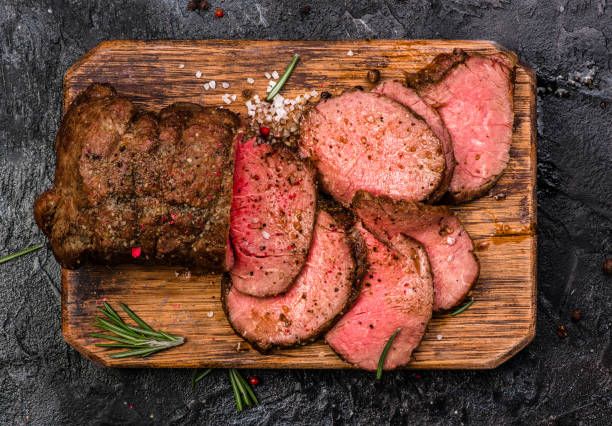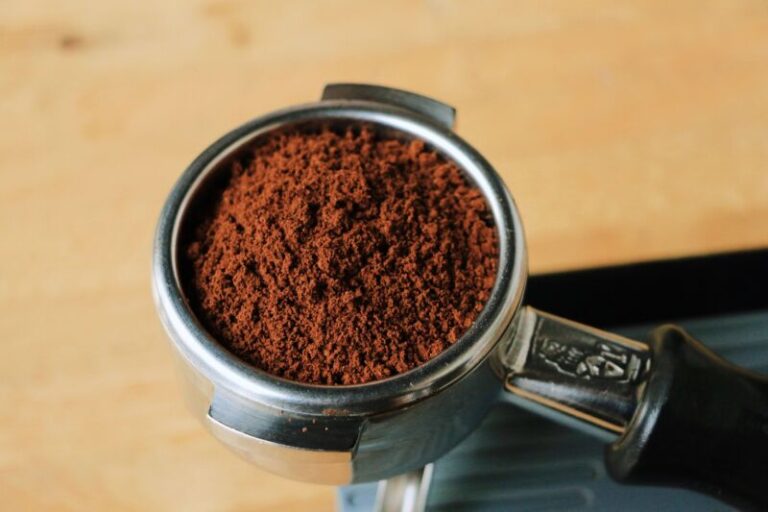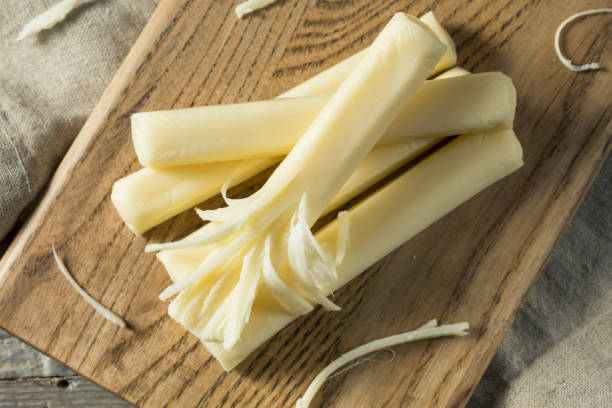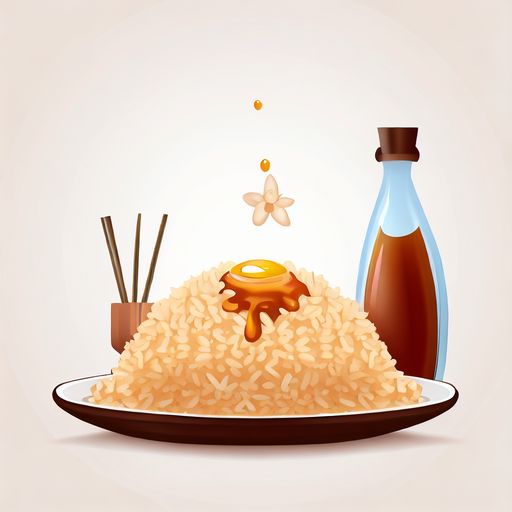What is Corned Beef? A Delicious Tradition Explained
Welcome to our in-depth exploration of corned beef, a delectable dish that has captured the hearts and taste buds of many. In this article, we will explore the history, cooking method, and cultural importance of corned beef brisket in order to answer the question, “What is corned beef?” Come along on a culinary adventure as we learn the backstory of this delicious delicacy.
What is Corned Beef?
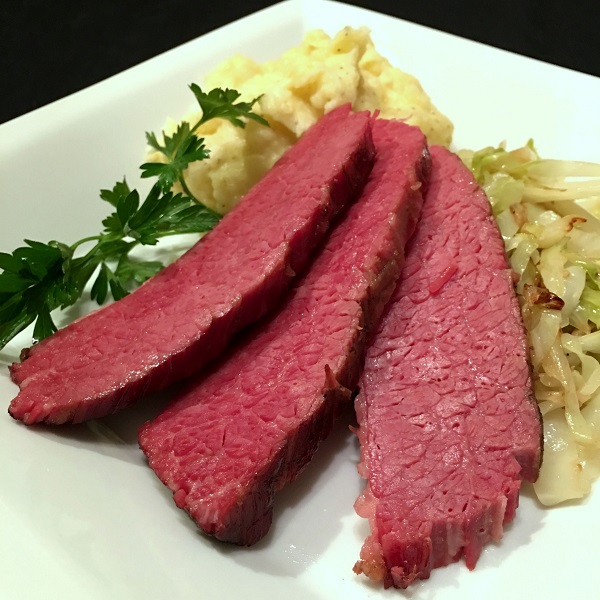
Corned beef refers to a cut of beef that has been cured by being submerged in a salt solution and then being seasoned with other herbs and spices. “corned” refers to the corn-sized grains of salt used in the curing process. Beef brisket, a cut from the animal’s lower chest, is the primary ingredient in most corned beef recipes. Round or rump are two alternative beef cuts that work just as well.
Corned beef is prepared by brining the meat in a mix of water, salt, and spices. After being allowed to cure, the meat absorbs the salt, which helps to preserve it. Corned beef gets its signature flavor from the curing process, which also helps to preserve the meat.
Corned beef has been around since before refrigeration was invented, and its original purpose was to preserve meat. Curing the beef in a salt solution prevents the formation of microorganisms, extending its shelf life. Sailors and other travelers relied on corned beef as a convenient source of nourishment while on the road.
Corned beef has become a staple of Irish-American cooking and a staple of the St. Patrick’s Day menu throughout the United States. Corned beef and cabbage, as well as sandwiches, are popular ways to have it. Tender and tasty meat is achieved by slow cooking, baking, or boiling.
Corned beef is praised for its robust flavor and adaptability in the kitchen, but eating too much of it may have negative health effects due to the high levels of salt contained in the curing process. Consuming corned beef as part of a balanced diet and lifestyle requires moderation and a well-rounded approach to food.
Where Does Corned Beef Come From
Cured with coarse-grained rock salt, or “corns” of salt, corned beef is a kind of preserved meat. Its popularity increased around the 17th century, although its history dates back far more than that.
Corns of salt were employed to cure and preserve the meat, thus the term “corned beef.” This method uses a brine solution of salt, sugar, and spices to soak the beef brisket or other pieces. The meat is tenderized and flavored throughout the brining process.
Corned beef’s popularity grew not just in the United States, but also in many other nations. Corned beef and cabbage, a meal popularized by Irish immigrants, has become synonymous with St. Patrick’s Day festivities in the United States.
Corned beef is now made and eaten in many countries. Beef is often available at grocery shops as both canned and pre-packaged products. The method of curing and the spices used might be different from one location to the next.
History of Corned Beef
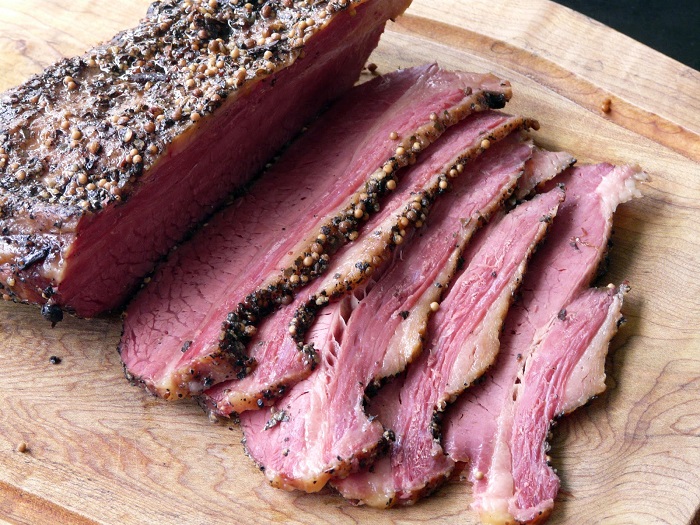
Corned beef’s roots go all the way back to prehistoric times, when humans first learned to cure meat with salt. Before refrigeration was invented, salt curing was an important means of preserving meat. “corned” refers to the corn-sized grains of salt used in the curing process.
The preserved meat known as corned beef became a staple for mariners and tourists alike. Long-distance maritime cruises were made possible by the salted and cured beef since it could keep for a long time without spoiling. When fresh meat was in short supply due to exploration or marine commerce, the preservation method used to create corned beef was invaluable.
Corned beef quickly rose to prominence as a staple in the diets of many Europeans, especially in Ireland and England. meat from Irish cattle grazing on beautiful green meadows was salt-cured and used to make corned meat. Corned beef is a staple in Irish culture and has been for generations.
During the 17th and 18th centuries, as European colonialism and commerce flourished, corned beef’s sway grew. Corned beef is a custom that was taken throughout the globe by European explorers and colonizers. Corned beef became widely consumed in areas with heavy European influence, such as the Caribbean and North America.
Irish immigrants to the United States in the 19th century brought with them a fondness of corned beef and other Irish dishes. Pork was more common in Ireland, while beef was more common and cheaper in the United States. Corned beef is a popular option, particularly in Irish-American groups, since it is an adaptation of a traditional Irish meal in which pig has been replaced with beef.
Corned beef has come to symbolize Irish-American culture and traditions, especially around St. Patrick’s Day. As Irish immigrants embraced their ancestry and made the most of their newfound advantages, the custom of serving corned beef on St. Patrick’s Day spread throughout the United States. Corned beef brisket, known for its taste and tenderness, has become a popular meal in modern times, often served over cabbage, potatoes, and other Irish staples.
Corned beef’s past demonstrates how it developed from a functional means of preservation to a well-liked culinary custom. Its broad and varied history is reflected in its global dissemination and continuing cultural relevance.
Corned Beef in the U.S.
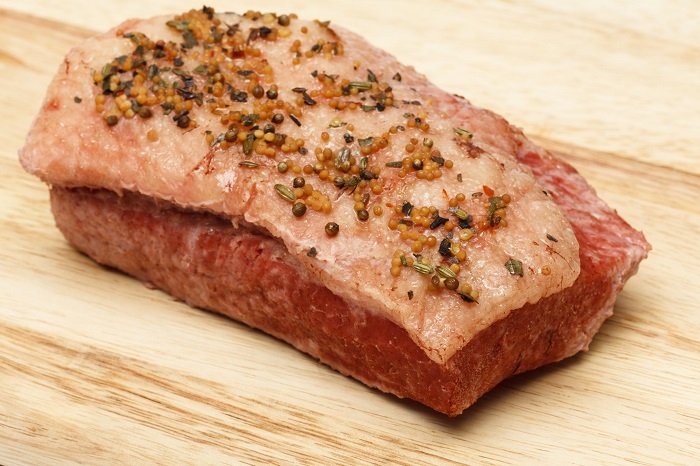
Particularly in the United States, corned beef has come to have a special position in the culinary canon. It has achieved legendary status, particularly in Irish-American circles. of the United States, beef brisket is the primary ingredient of corned beef.
Corned beef became a mainstay in the diets of Irish Americans throughout the 19th century when large numbers of Irish settled in the United States. While pig was historically favored in Ireland, beef gained popularity in the United States due to its lower price and greater availability. Because of this, Irish immigrants modified their traditional recipes by substituting beef, and more specifically beef brisket, for the original pork in corned beef.
The beef brisket is a delicious and tender cut taken from the cow’s lower chest. In the United States, it grew to be widely used as the prime choice for corned beef. Brisket gets its signature flavor by being cured in a salt solution flavored with different spices. The resultant corned beef brisket is tender, juicy, and full of flavor.
Why We Eat Corned Beef on St. Patrick’s Day
In the United States, celebrating Irish culture on St. Patrick’s Day has become inextricably linked to the consumption of corned beef and cabbage. Corned beef’s close relationship with St. Patrick’s Day originates less with the country of Ireland than with the history and experiences of Irish immigrants to the United States.
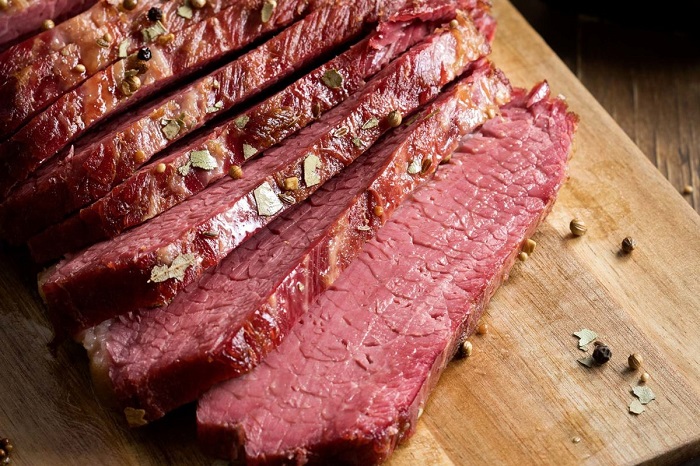
Celebration feasts in Ireland often included pig rather than beef. In the past, beef was a luxury item for most Irish people because of its high price and limited availability. Bacon and ham made from pork were the most prevalent and inexpensive cuts of meat.
The 19th-century Irish immigrants to the United States found a very different food culture from the one they left behind in Ireland. Beef, especially beef brisket in particular, was more accessible and cheaper than hog. Thus, the Irish immigrants modified their culinary customs by replacing pig with beef, particularly beef brisket, to create the much-loved dish known as corned beef.
Corned beef is a ritual that has been passed down through generations of Irish Americans. The 17th of March, St. Patrick’s Day, has become a major holiday for displaying Irish culture and heritage. Because of its availability in the United States and its historical significance in St. Patrick’s Day celebrations, corned beef has become a staple of these meals.
Corned beef’s popularity skyrocketed over the years, and it eventually became an indelible part of Irish-American St. Patrick’s Day traditions. Corned beef brisket, a tasty and soft cut of beef often served with cabbage, potatoes, and other traditional Irish side dishes, has become a beloved icon of St. Patrick’s Day celebrations.
How is Corned Beef Made?
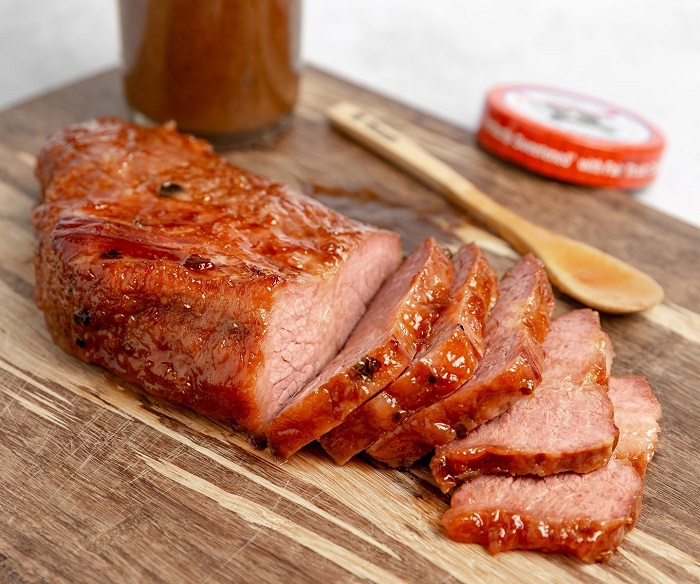
Curing the meat and adding seasonings are only two of the many procedures required to make corned beef. Corned beef may be cooked using a variety of beef cuts; however, the brisket is the traditional choice.
Selection of Meat
Picking the right cut of cattle is the first step in creating corned beef. Beef brisket is often ordered because of its delicious taste and soft texture. The meat’s marbling determines how juicy and savory it will be once cooked.
Brining Solution
Afterwards, a brining solution must be made. Brine is often made with water, salt, and an assortment of spices. Coriander seeds, peppercorns, mustard seeds, bay leaves, and sometimes cloves or allspice are among of the spices that are typically added in the brine. The corned beef is enhanced by the use of these seasonings.
Curing Process
The chosen meat is then completely immersed in the brine solution. The meat has to cure for a certain amount of time, often between 5 and 7 days but varying according on taste and desired flavor intensity. The meat is preserved and given a flavor boost from the spices as it soaks in the brine.
Flavors and Spices
Corned beef gets its signature flavor from the brine solution’s seasonings. The lemony flavor of the coriander seeds pairs well with the gentle spice of the peppercorns. The mustard seeds provide a little sharpness, and the bay leaves flavor and fragrance. These seasonings work together to give corned beef its distinctive taste.
Cooking Methods
Corned beef is ready to cook when the curing procedure is finished. You may pick from a variety of cooking techniques to get the perfect softness for your taste. Boiling, baking, and slow cooking are the three most typical approaches.
To boil corned beef, you’ll want to cover it with water in a saucepan and cook it over low heat until it’s cooked. The corned beef may be baked by gently heating it in the oven at a low temperature. Corned beef may also be cooked slowly in a crockpot, which gives the meat time to absorb the rich juices of the other ingredients.
Slicing and Serving
After it has been cooked, corned beef is usually left to rest for a few minutes before being sliced against the grain. Traditional sides including cabbage, potatoes, and carrots are offered alongside.
To get the delicious and delicate attributes of corned beef, it takes time and patience. Corned beef is a crowd-pleaser because its distinctive flavor comes from a mix of the curing process and carefully chosen seasonings.
Health Risks
Corned beef has a rich taste and cultural importance, but there may be hazards to your health if you eat it often. Some things to think about are as follows.
Sodium Content
Corned beef gets its signature taste by being cured in a salt solution. This, however, may also contribute to its high salt content. High blood pressure, cardiovascular disease, and renal difficulties are just some of the conditions that have been associated to excessive salt consumption. Individuals who are sensitive to or have been advised to decrease their salt consumption should eat corned beef in moderation.
Sodium Nitrite
The preservative sodium nitrite may be included in certain commercially manufactured corned beef. Sodium nitrite is used to preserve meat and inhibit the formation of germs, and it also gives the meat its signature pink hue. However, there may be hazards to your health if you consume too much sodium nitrite.
Nitrosamines are molecules formed when it reacts with certain ingredients during cooking; these compounds have been related to an increased risk of cancer. Choose corned beef without added nitrites or go for a natural alternative if you want to reduce your sodium nitrite intake.
Fat and Calorie Content
High levels of saturated fat and calories have been linked to eating corned beef, especially the fatty portions. Heart disease and excess weight gain are two potential side effects of a diet heavy in saturated fat. Choose thinner cuts of corned beef or reduce your serving size if you’re watching your weight or health.
Allergies and Sensitivities
Mustard seeds and other spices used in the brining solution may trigger allergic reactions in certain people. If you have food allergies or sensitivities, you should avoid corned beef and carefully check the ingredient list before buying or eating it.
It’s important to eat healthily and moderately, as is the case with any meal. Talking to a doctor or a qualified dietician who can tailor recommendations to your unique situation is a good idea if you’re worried about your health or have dietary limitations.
Cooking Corned Beef Brisket
To get juicy, delicious, and tender corned beef brisket, meticulous preparation and cooking are required. Here are some things to keep in mind when you cook your corned beef brisket:
Preparation
Corned beef brisket should be rinsed under cold water to eliminate any extra salt or brine before being cooked. Use a paper towel to dry it off. The decision to remove the extra fat from the brisket is purely aesthetic.
Cooking Method
Corned beef brisket may be prepared in a number of ways. Boiling, baking, and slow cooking are the three most typical approaches.
Boiling: When boiling, put the brisket in a big saucepan and cover it with liquid, such as water or broth. The liquid’s flavor may be enhanced by the addition of spices or other flavorings. Get the liquid boiling, then turn it down to a low simmer. Make sure the meat is tender by cooking it for at least 2.5 hours and up to 3.5 hours with the lid on.
Baking: When baking, preheat the oven to 325 degrees Fahrenheit (163 degrees Celsius). Put the beef in a baking dish or roasting pan. To avoid the bottom of the pan from drying up, add additional liquid such as water or broth. Use foil or a cover to seal the pan. The brisket should be cooked for three to four hours in the oven, or until it can be easily pierced with a fork.
Slow cooking: To slow cook brisket, put it in a slow cooker or Crock-Pot and season with salt and pepper to taste. To add moisture, pour in a tiny quantity of liquid like water or beef broth. Tender, fall-apart meat may be achieved by slow cooking for 8-10 hours or by rapid cooking for 4-6 hours.
Flavoring
It is possible to improve upon the flavor of corned beef brisket by adding aromatics after it has been cured and infused with seasonings. Whole peppercorns, mustard seeds, cloves, bay leaves, and coriander seeds are also common traditional additions. You may either add these spices directly to the pot or wrap them in cheesecloth to remove them easily after cooking.
Vegetables
During the last hour of cooking, toss in some veggies for a hearty twist on the traditional corned beef and cabbage. Common ingredients include potatoes, carrots, onions, and cabbage wedges. These greens take on the broth’s taste and go well with the corned meat.
Resting and Slicing
To cut the corned beef brisket, wait 10 to 15 minutes after taking it out of the cooking liquid. Meat that has had time to rest is more flavorful and tender than that which has been cooked immediately. Thin slices cut against the grain will keep the brisket tender.
Sandwiches, salads, and hash all benefit from the addition of corned beef brisket, which is a very adaptable component. Your preferred cooking technique and the tools at your disposal will determine your final decision. Enjoy the tasty results of your taste experiments with handmade corned beef brisket.
Conclusion
Finally, corned beef brisket is a delicious treat with deep historical and cultural roots. Corned beef has made its way from its modest origins as a preservation technique to its prominent role in American and Irish-American cuisines. Although this meal is delicious, it is important to limit your intake due to possible health hazards.
Whether you just eat corned beef on St. Patrick’s Day or enjoy it all year long, the distinctive flavor and rich history of this cherished meat will stay with you long after your last bite. If you’re feeling adventurous in the kitchen, try your hand at corned beef brisket.
References:
